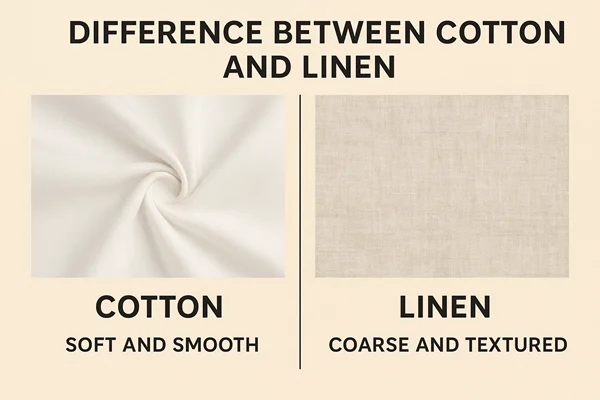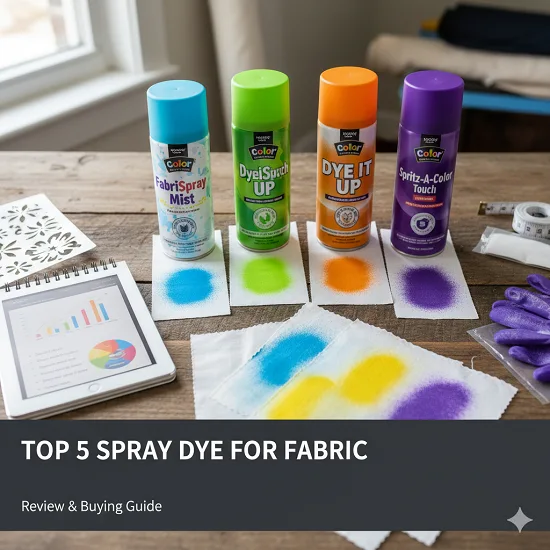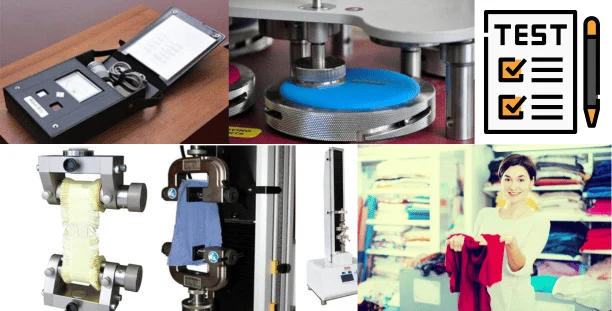Different Types of Knit Fabrics with Pictures
It is the process of converting yarn into fabric by interloping yarns. In the actual construction of the fabric, loops are formed, and then new loops are drawn through previously formed loops. In the knitting sector, knitted loops are known as stitches when they are pulled through another loop. It should be noted here that stitches are produced with knitting needles. Here we present details on Different Types of Knit Fabrics with Pictures.
In the case of weft knitting, the loops will be formed in the horizontal direction, and the fabric produced will be in the tubular form. In the case of warp knitting, the loops will be formed in the vertical direction, and the fabric produced will be in open-width form. Different Types of Knit fabrics are used for the manufacture of knit garments such as polo shirts, T-shirts, sweaters, sportswear, swimwear, children’s wear, undergarments, etc.. Characteristics of knit garments are influenced by the construction, specification, and properties of the knit garments. The key topic is the Different Types of Knit Fabrics.
Properties of Different Types of Knit Fabrics:
The main properties of the knitted fabric are listed below:
- Higher tear strength.
- Higher crease resistance.
- Low bending length.
- Higher thickness.
- Higher bending modulus.
- Lower tensile strength.
- Higher permeability.
- Weft knitted fabric is highly extensible.
- Warp knitted fabric is less expansible.
- Weft knitted fabric has high elastic recovery but incomplete recovery.
- Warp knitted fabric has better elastic recovery compared to weft knitted fabric.
Merits and Demerits of Knit Fabrics/Advantages and Disadvantages of Knit Fabrics:
Some useful points have been mentioned in the following:
The best qualities of the knitwear are that it has great flexibility and it is soft to the touch. Another strong point of the flat, horizontally knitted material is that shaped knitting can be done. Thus, things like socks, hand gloves, etc., can be knitted into products without having to undergo the trouble of stitching them. Moreover, the advantage is that there are no stitches.
However, on the contrary, the quality of flexibility results in a drawback because the shape gets distorted easily while using the products. Again, if one end of the horizontally knitted yarn is pulled, it gets loosened sporadically till any length. Such drawbacks are not found in the vertical knitwear but the flexibility in vertical direction is poor and shape knitting is not possible.
Vertical knitting is used mainly for high-grade knitting because it enables knitting the pattern more tightly than horizontal knitting. It is also suitable for making a lot of designs. The materials called tricot or Milanese among the mufflers and stitched gloves, etc., are made from the vertically knitted ground material.
Some knit fabrics have excellent moisture-wicking ability, especially those made from plant-based materials. Knitted fabrics are looped together from a single or double yarn, creating small openings in the finished fabric. These openings serve as pockets for holding air or minuscule amounts of water. This unique feature also makes knits warmer than other fabrics, even when the fabric is soaking wet.
Sewing with knits was a challenging process primarily because they have plenty of stretch and its edges may curl up as you work. While sewers have problems sewing knits, this feature also makes it possible to create form-fitting apparel that does not require zippers, buttons or hooks. Knit fabrics give in all four directions, which is useful for creating comfortable t-shirts, undergarments and other one-piece apparel.
Various Types of Knit Fabrics Produced in the Textile Industry with Pictures:
Knit fabrics are basically of three types. Those are warp-knit fabrics, weft-knit fabrics, and crochet fabrics. The most common weft knitted fabric structures are briefly discussed in the following, with their pictures:
1. Plain or Single Jersey Fabric:

The most simple knit fabric structure is termed as plain or single jersey fabric. In this type of fabric structure, all the loops intermesh in the same direction and the fabrics has a different appearance on each side. The side to which the loops appear pulled through is termed as the “Face” or “Technical face”. The side from which the loops appear pushed away is termed as “Back” or “Technical back”.
2. Rib Fabric:
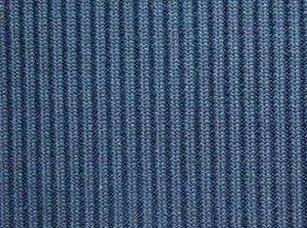
Rib fabrics are another type of weft knitted plain fabrics. The rib fabrics are composed of loops formed in opposite directions, and when viewed from any side, both face and back loops are prominent. All the loops of any wales are of the same type, that is, either all back or all face. When the fabric is relaxed, it collapses to a situation of alternate wales touching one another. The wales in between are hidden but show on the reverse side of the fabric.
Rib fabrics are used where portions of grommets are expected to cling to the shape of the human body but are capable of stretching when required. The main areas of using rib fabrics are the waistband, cuff, and collar. Extensibility of rib fabric may be up to 120% in the course direction.
3. Purl Fabric
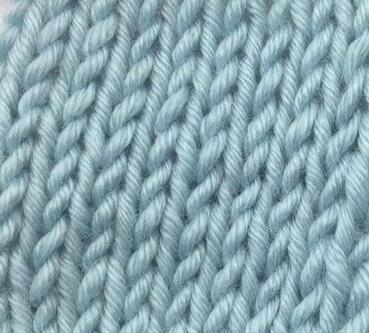
Purl fabrics are also a weft knitted fabric. The simplest type of purl fabric consists of courses of face loops alternating with courses of back loops. This is termed as 1*1 purl fabrics. This type of fabric has a large vertical extensibility which is largely elastic, depending on the fabric used and the yarn construction. The fabric is bulky and shows excellent thermal insulation properties
4. Interlock Fabric:
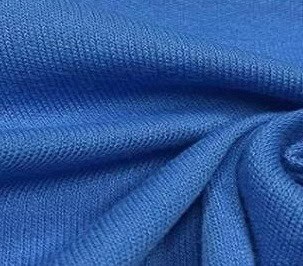
This type of fabric has the technical face of plain fabric on both sides of the fabric. But, its smooth surface cannot be stretched out to reveal the reverse meshed loop wales because the wales on each side are exactly opposite to each other and are locked together. In this type of knit fabric, each interlock pattern row needs two feeder courses, each with a different yarn that knits on separate alternate knitting needles, producing two half-gauge 1*1 rib courses whose sinker loops cross over each other. Thus odd feeder will produce alternate wales of loops on each side, and the even feeder will produce the other wales.
Interlock fabric relaxes about 30-40% or more when compared with its knitted width. A 30-inch diameter circular knitting machine will produce 94 inches of open width fabric after slitting the tubular fabrics. But after finishing the 94 inches grey width will produce 60-66 inches finished with fabric. It is a balanced, smooth, stable structure that lies flat without curling.
5. Double Knit Fabrics
Double-knit fabrics are produced by two-layer thick fabrics using two beds of needle sets. This type of knitted fabric, double knit, is made on a special interlocking stitch technique, which it creates a thicker and more stable material than single knits. It is produced on a double-knit (interlock) knitting machine because it has two sets of needles for forming two layers of loops that interconnect.
6. Terry fabric
Knitted Terry Fabric is a layered jersey fabric generally made with 100% cotton. There are loops on the surface of the fabric. Two sets of yarn are used to make the fabric; one set creates the loops, while the other set creates the base fabric. Sometimes the loops are brushed to create a much softer feel to wear them in cooler weather. There are two varieties of terry fabric- Terry towel and French terry. Terry towel has larger loops thus it can absorb water while French terry has smaller loops and mostly used for comfy sweatshirts, hoodies, pullovers, joggers and loungewear.
7. Fleece Knit Fabric
One kind of weft insertion jersey is fleece. Weft knit fabrics that have an extra yarn inserted for every course are known as weft insertion fabrics. These extra yarns are retained in place by the loops in each course of the fabric rather than being knit. Typically, the foundation yarn is softer than the insertion yarn. When the insertion yarn is sheared and napped, it creates soft, fuzzy fabric called fleece. Mostly polyester is used in fleece fabric. Because of its fuzzy texture and thick fabric composition, fleece is ideal for cold climates. Fleece is used in the lining of leggings, gloves, caps, scarves, earmuffs, jackets, pullovers, and hoodies, blankets, coats, and boots etc.
8. Pique fabric:
Pique is a sturdy knitted cotton fabric with a little, textured design all over it. A distinctive, delicate texture is produced by the cross-tuck knit construction, which produces a cellular look. The fabric has a soft hand feel. It is breathable and durable. It wicks away moisture from the body, thus used in sportswear, polo shirt,s etc.
9. Mesh Knit Fabric
Mesh Knit fabric is made from a knitting method in which the material is intended to be breathable and very light. As such, its suitability includes wearing sporting suits, providing breathability for shoes and lingerie, and being part of outdoor gear. Mesh-knit fabric is preferred in terms of ventilation and wicking ability.
10. Sweater Knit
Sweater knits are popular knitted fabrics for sweaters, cardigans, and other comfortable warm clothing. These are mostly made from wool, cotton, or synthetic fibers and usually remain elastic, warm, and textured according to the type of stitches used: rib, cable, or jacquard. The types of knits can vary in weight from light to heavy, depending on the application.
11. Tricot Knit
The tricot knit fabric is created from fine warp-knitted fabric, constructed of rows of parallel loops, which has a very neat face and textured reverse side. The features of tricot knit fabric are its high resistance to runs, stretch-proofing, and durability. It is much preferred on account of its smooth, beautiful drape and being lightweight and crease-resistant. For lingerie, swimwear, linings, and active wear, tricot is considered ideal.
12. Velour Knit
Velour knit is a very luxurious, velvety texture knitted fabric with a short pile that is relatively thick and dense. It is a knitted fabric created either by special knitting or weaving techniques, then sheared to form a very smooth, luxurious silvery sheen. Since Velour knits possess generous elastic, they are charming in loungewear, for athletic wear, in robes, and in upholstery, praised for their comfort and rich look.
13. Lace Knit
Lace Fabric is a decorative and delicate web-like fabric produced by different techniques, like warp knitting or embroidery, etc. Usually, lace fabric is constructed from silk, linen, nylon, polyester, and even cotton fiber. Because it requires a great deal of skill and time to manufacture, lace is typically regarded as a premium cloth. It is used to decorate garments, in sarees, wedding gowns, lingerie, home furnishing like table cloths, curtains, cushion covers, lampshades, etc.
14. Scuba Knit
Scuba knit (also called scuba fabric or neoprene knit) is a double-knit fabric made from a blend of polyester and spandex, often with a foam or mesh layer sandwiched between two layers of fabric. It is thick, structured, and has a smooth, slightly glossy surface with minimal stretch compared to other knits.
15. Twill Knit Fabric
Twill Knit Fabric is a type of textile fabric with a pattern of diagonal parallel ribs (in contrast with a satin and plain structure). and the fabric made by the worsted wool, but may also be cotton, texturized polyester, or a blend.
16. Ottoman rib
Ottoman rib is a fabric with a pronounced ribbed or corded effect, frequently made of a mixture of cotton and other like yarns. Ottoman rib used for sweatshirts, sweatshirts, dresses, and in particular, dresses.
17. Slub jersey
Slub jersey is simply made with slub yarn. And these slub cotton yarns contain mild lumps and imperfections, frequently left in the fabric on purpose or created deliberately with the aid of knotting the fabric. Slub fabric is mostly used to make a t-shirt.
18. Quilted jersey
Generally, 2-3 layers are bonded together to create a quilted effect. Yarn-dyed stripes – yarn is dyed, then knitted together in a stripe pattern, which indicates on each facet of the fabric, can be a variety of competition and weights.
19. Waffle Fabric
Waffle fabric or honeycomb fabric is commonly made of cotton or microfiber and is manufactured in a way that makes it very absorbent. This fabric has thermal properties, presenting warmth and insulation by way of trapping body heat and forming a warm layer next to the skin, increasing heat retention. Waffle fabric is used for cleaning surfaces in the industry.
Wrap Up
All the Different Types of Knit Fabrics with Pictures are very comfortable to use; mostly, knit fabric uses are T-shirts, Polo shirts, sweaters, sportswear, swimwear, children’s wear, shapewear, undergarments, etc. Hope you liked this!
- You may love to read: Types of Fabric Defects with Causes and Remedies

